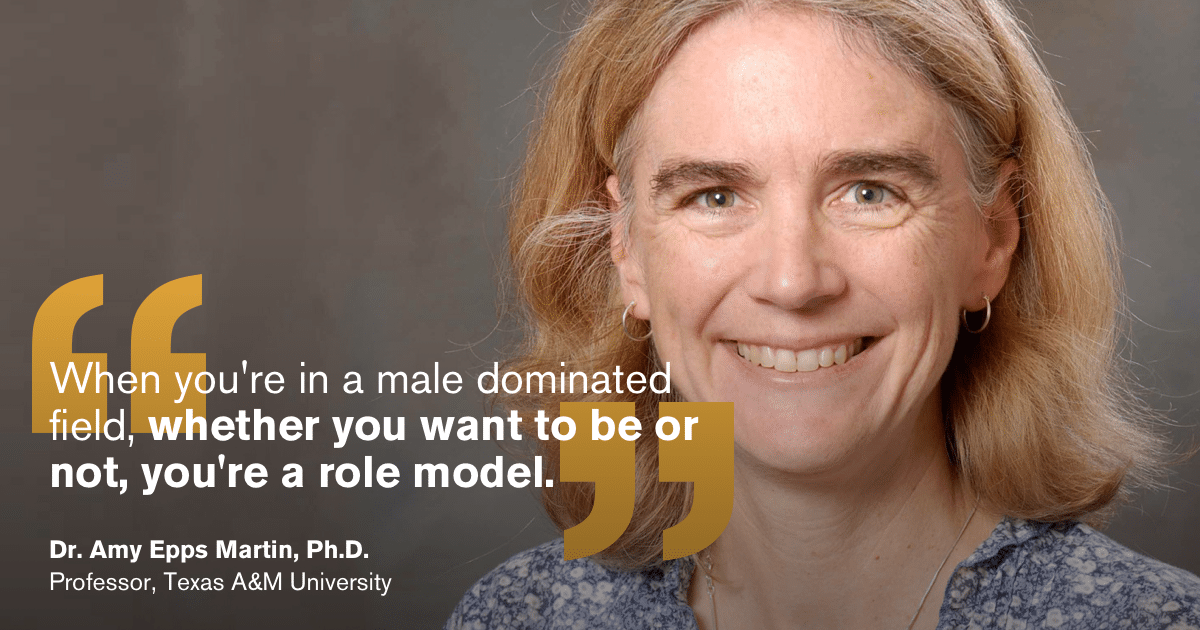 What led you to your current role as a professor at Texas A&M University?
What led you to your current role as a professor at Texas A&M University?
My dad (Dr. Jon Epps) has worked in asphalt materials within academia and the industry. He started his career at Texas A&M, and I always had him as an influence growing up—first in Texas and then in Nevada. I have followed my dad’s path in some ways, but also blazed my own trail.
Just like my dad, I went to Berkeley and studied civil engineering. I did my master’s in transportation and my PhD in asphalt materials with the same advisor, Professor Carl Monismith.
I then got my first job at Texas A&M, too. This is my 21st year here. I really enjoy teaching and mentoring students. I love how it all fits together: research, teaching and service.
What does a typical day on the job look like?
I commute about an hour to Texas A&M two or three days a week to facilitate my husband’s job in the Houston area. When I’m on campus, I do all my office hours, teaching and research meetings. When I’m at home, I do conference calls and get more of my writing done. It’s worked for the past 15 years.
How have you seen the engineering department at Texas A&M evolve?
The dean announced that the university wants to have 25,000 engineering students by 2025. That’s as big as some universities. So, there’s lots of new construction around us right now, including the new Center for Infrastructure Renewal (CIR) laboratory facility.
Can you describe the award-winning research that Swathi Mayi Theeda (a Blacklidge engineer and part of the Women in Asphalt series) was involved with under your direction?
One of my ongoing research threads is development of a surface performance grade, or SPG, specification for chip seal binders, which is what Swathi worked on. What’s exciting about that is it’s something that’s actually being implemented and used.
Basically, we have one way of specifying binders—performance grade, or PG, binders for hot mix asphalt—when we mix asphalt binder with aggregate. The SPG specification is using the same tools but adapting it to chip seals, where we spray apply the binder and then put little aggregate chips on the top. We do a lot of this on more rural roads, especially in Texas. It’s adapting some of the things that everybody already believes in and has the equipment for, to another application.
Where would you like to see the industry go in the next 5-10 years?
Another of my research threads is recycled materials and sustainability. I have a big project right now that’s exciting and sort of high profile. It’s on trying to put more recycled materials into asphalt pavements. I think it’s great that asphalt pavements are the number one recycled product in America. Hopefully, the sustainability of asphalt materials can be improved while simultaneously providing good engineering performance and big economic savings for this high volume product.
What advice do you have for women who are interested in the field?
When you’re in a male dominated field, whether you want to be or not, you’re a role model. You just do the best you can, keep going forward and try to have an impact.
